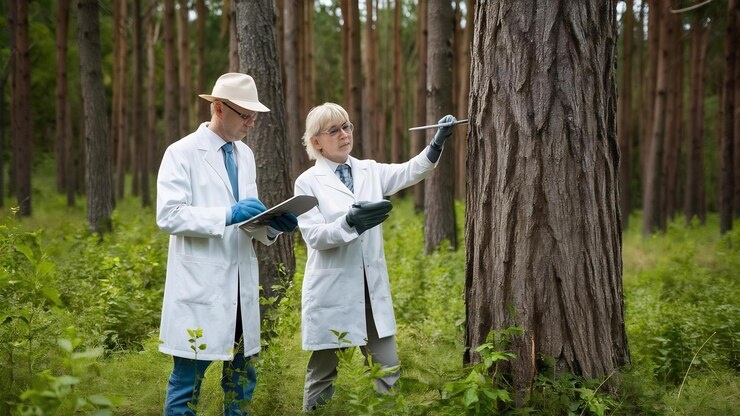Tree Doctors Explained: Why Local Tree Care Experts Matter for Your Landscape
Context: What Tree Doctors Are and Why They Exist
Tree doctors—also known as certified arborists—are professionals trained in the science and art of planting, caring for, and maintaining trees. Much like medical doctors for humans, tree doctors diagnose problems, treat diseases, and recommend preventive care to keep trees healthy and safe.
Their role has evolved significantly in recent decades, especially as urban spaces expand and climate change challenges the health of local ecosystems. Tree doctors are now crucial for:
-
Residential landscapes
-
Commercial properties
-
Parks and recreational areas
-
Municipal tree planning and safety audits
They bring both scientific knowledge and practical skills, often climbing trees, operating equipment, or prescribing treatments.
Importance: Why Tree Doctors Matter Today
In a world grappling with environmental concerns and rapid urbanization, local tree care experts offer solutions that are both sustainable and safety-oriented.
1. Tree Health and Longevity
Proper pruning, fertilization, and disease control can extend a tree’s life by decades. This preserves environmental benefits and reduces costs associated with early tree removal.
2. Safety and Risk Reduction
Dead or weakened branches can pose serious hazards, especially during storms. Tree doctors assess structural integrity and mitigate risks.
3. Environmental Protection
Arborists understand biodiversity and native species, ensuring landscapes remain environmentally balanced.
4. Legal and Community Standards
Many cities and neighborhoods have strict tree management policies. Arborists help homeowners and businesses stay compliant with local guidelines.
5. Property Value
Healthy, mature trees can increase property value by up to 15%. A professional arborist ensures your investment in landscaping pays off long-term.
Recent Updates: Trends and Developments in 2024–2025
Several new trends are influencing tree care practices around the world, driven by climate concerns, smart technology, and urban development.
1. Climate-Responsive Planting
As weather patterns shift, arborists are focusing on planting drought-resistant and native species. According to a 2024 report by the International Society of Arboriculture (ISA), there has been a 22% increase in consultations related to climate-adaptive tree planting.
2. Use of Technology
Modern arborists now use:
-
Drone imaging to assess tree canopy and structure
-
GIS mapping to monitor tree populations across cities
-
Soil sensors to track moisture and root health
3. Tree Inventory Programs
Cities like New York, London, and Mumbai are using digital platforms to manage public trees. This includes species tracking, pest control data, and pruning schedules.
4. Rise in Urban Tree Doctors
There’s been growing demand for arborists in urban centers, especially after major storm events. Tree risk assessments are now part of infrastructure planning.
Laws and Policies: Regulatory Frameworks for Tree Care
Tree care is often regulated by municipal and national laws to protect both public safety and environmental health. These policies vary by country and even city, but key elements include:
United States-
Tree Protection Ordinances: Many cities require permits for tree removal or pruning, especially for protected species.
-
ANSI A300 Standards: Industry-wide guidelines for tree care practices.
United Kingdom
-
Tree Preservation Orders (TPOs): Protect specific trees or woodlands; penalties apply for unauthorized removal.
-
BS 3998: Provides guidance on pruning and maintenance.
India
-
Municipal corporations often require NOCs (No Objection Certificates) for tree removal.
-
The Tree Act (varies by state): For example, Maharashtra has strict policies regarding urban trees.
Working with a certified arborist helps ensure that your landscaping projects follow the law and avoid legal consequences.
Tools and Resources: Apps, Websites, and Services for Tree Care
Here are some helpful platforms and resources for individuals looking to maintain healthy trees or hire professionals:
| Tool/Platform | Purpose | Website |
|---|---|---|
| ISA (International Society of Arboriculture) | Certification, education, and tree care resources | treesaregood.org |
| Davey Tree Expert Company | Tree diagnostics, residential care services | davey.com |
| TreePlotter (by PlanIT Geo) | Urban forest mapping and inventory management | planitgeo.com |
| Arbor Day Foundation | Tree planting guides, species selectors, and volunteer opportunities | arborday.org |
| iTree Tools | Free software to assess the value and benefits of trees | itreetools.org |
Additionally, many cities and states maintain their own urban forestry divisions with helplines and directories of licensed arborists.
FAQs: Understanding Tree Doctors and Tree Care
Q1: How do I know if a tree needs a doctor?
A: Common signs include:
-
Discolored or wilting leaves
-
Cracks in the trunk
-
Dead branches
-
Fungus growth
-
Leaning structure
If any of these appear, consult a certified arborist for evaluation.
Q2: Are tree doctors different from gardeners?
A: Yes. Gardeners manage general plant care, while tree doctors (arborists) are certified professionals trained in the science of tree biology, health, and structural safety.
Q3: Do tree doctors only remove trees?
A: Not at all. Their primary role is preservation. They aim to diagnose, treat, and protect trees rather than remove them—unless the tree is hazardous or beyond recovery.
Q4: How much does a tree health assessment cost?
A: It depends on location and tree size. Basic assessments start at $75–$200, but costs can rise for larger properties or advanced diagnostics.
Q5: Can I perform tree care myself?
A: Basic care like watering or minor pruning is safe. However, major pruning, disease treatment, and risk evaluation should be done by certified professionals to avoid injury or legal issues.
Conclusion
Tree doctors play a crucial role in maintaining healthy landscapes, protecting the environment, and ensuring public safety. As urban growth and environmental challenges continue to impact our green spaces, the need for qualified arborists has never been greater.
By understanding their expertise, staying updated on trends, and using trusted tools and services, homeowners, businesses, and governments can contribute to a healthier and more beautiful world—one tree at a time. Whether you're planting a sapling or maintaining a 100-year-old oak, having a tree doctor on your side makes all the difference.
